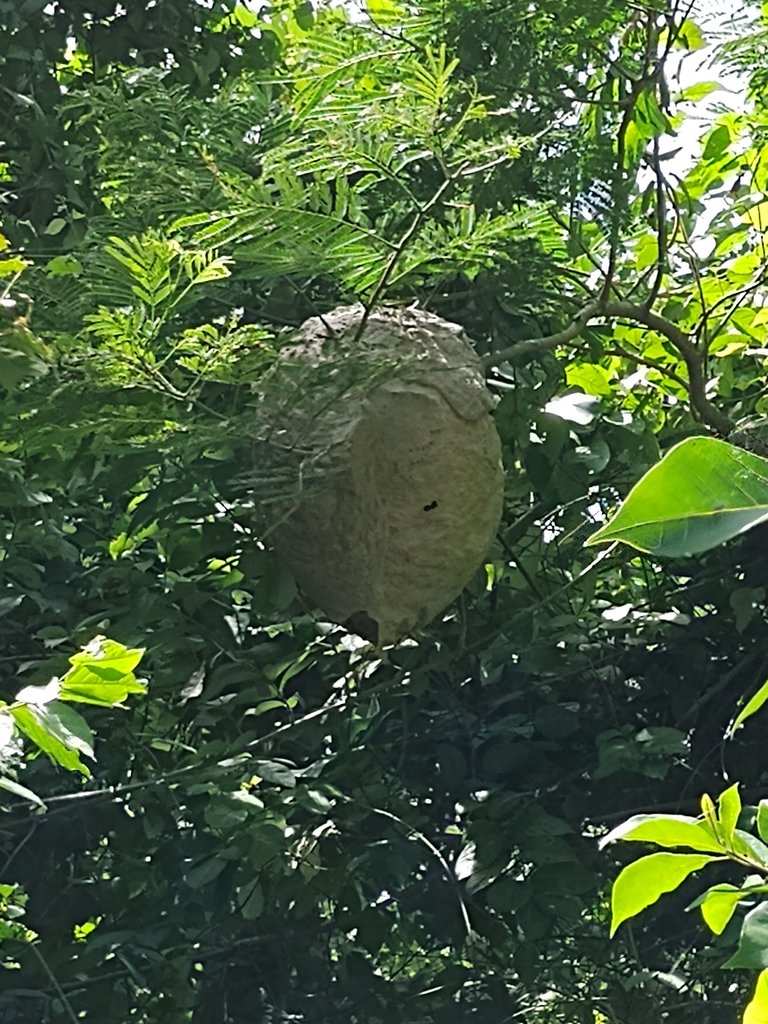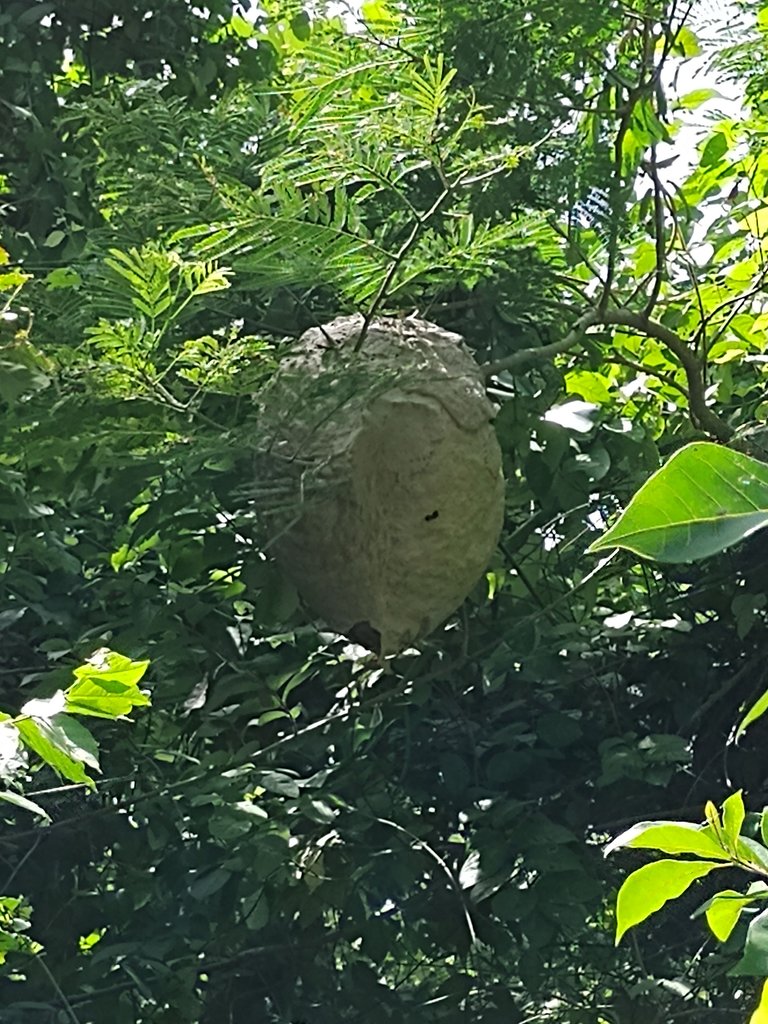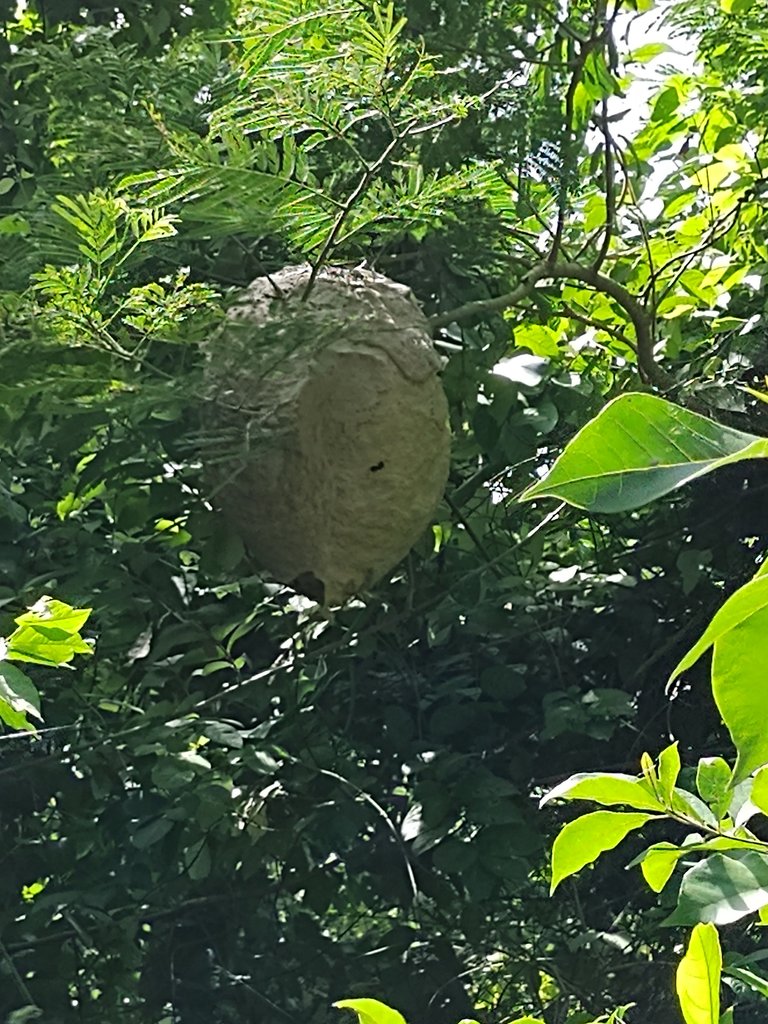Fauna en El Salvador, abejas come carne. /Fauna in El Salvador, bees that eat meat.

¿Has visto estas abejas? ¿Te han picado alguna vez? Si no lo han hecho es probablemente que nunca o muy pocas veces hayas navegado por los senderos de nuestra madre naturaleza, conocidos localmente como come carne por su peculiar forma del aguijón grande, estas abejas tienen la peculiaridad de construir sus enjambres en lo alto de los árboles dentro de los bosques nebulosos o en las sábanas locales, estas estructuras albergan y resguardan a las abejas, es una estructura diseñada cual si fuera un cilindro invertido, en forma cónica.
Dentro de su estructura muy fuerte donde se alojan los panales, donde resguardan sus crías en la parte superior y la miel en la parte inferior, esto lo sé por qué cuando niño bajábamos algunos de estos panales en los meses de diciembre y enero que es cus do la producción de miel está en su apogeo, la característica principal de esta miel es que con el tiempo se torna granulada y cristalizada, lo que constituye en una combinación de exquisitos sabores para el paladar, las abejas son de color amarillo y como repito si te llegan a picar sentirás los más grandes dolores que puedas imaginarte de ahí su nombre tan peculiar como es conocido en nuestras localidades, usualmente estos panales están construidos por una combinación de materiales muy fuertes que hace difícil que vayan a sucumbir ante los elementos, incluso durante la lluvia la impermeabilización está garantizada.

Usualmente se alimentan del néctar de las flores, haciendo secundariamente la polinización en el proceso ayudando con ello a al preservación de las especies y plantas nativas, de ahí su importancia para nuestra madre naturaleza.
Este panal para su construcción, las abejas usan usualmente residuos de estiércol de ganado vacuno y bovino, por esta razón muchos no tocan estos panales, claro excepto cuando se es niño y sabes que hay miel dentro no importa el origen del envoltorio, además, las abejas realizan un proceso de impermeabilización por lo que creemos que este material está debidamente sanitizado.

Así que si bien en algún momento bajamos un panal de estos hoy tratamos de brindar protección a los mismos por su importancia sistémica para los ecosistemas.
Gracias por la visita recuerden material propio fotos incluidas, traducción al inglés usando traductor recuerden soy un hablante nativo de español.

English traducción:
Have you ever seen these bees? Have they ever stung you? If they haven't, it's probably because you have never or very rarely wandered through the trails of our mother nature, locally known as "meat-eaters" due to their peculiar large stinger. These bees have the peculiarity of building their hives high up in the trees within the cloud forests or in the local plains. These structures house and protect the bees, and are designed like an inverted cylinder, conically shaped.
Within their very strong structure where the honeycombs are housed, they protect their brood at the top and honey at the bottom. I know this because when I was a child, we used to bring down some of these honeycombs in the months of December and January when honey production is at its peak. The main characteristic of this honey is that over time it becomes granulated and crystallized, which results in a combination of exquisite flavors for the palate. The bees are yellow in color, and as I mentioned, if they happen to sting you, you will feel the most intense pain you can imagine, hence their peculiar name as known in our localities. Usually, these honeycombs are built with a combination of very strong materials that make it difficult for them to succumb to the elements, even during rain, waterproofing is guaranteed.

They usually feed on flower nectar, and secondarily assist in the pollination process, thereby helping to preserve native species and plants. This underscores their importance to our mother nature.
For the construction of these honeycombs, bees usually use residues of cattle and bovine dung. For this reason, many people do not touch these honeycombs, except of course when one is a child and knows that there is honey inside, regardless of the origin of the wrapping. Additionally, the bees undergo a waterproofing process, so we believe that this material is properly sanitized.
So while at some point we may have brought down one of these honeycombs, today we try to provide protection to them due to their systemic importance for ecosystems.
Thank you for visiting. Remember, all material is original, including photos. Translation to English using a translator. Remember I am a native Spanish speaker.

Hace algunos años me picó una abeja , es bastante doloroso , no vi la abeja , pero no quiero acercarme a ninguna nunca más , mano , si viera la forma en que se hinchó mi brazo , mejor dejarlas quietas :)
Si mano es mucho dolor hay que tener cuidado muchísimo.